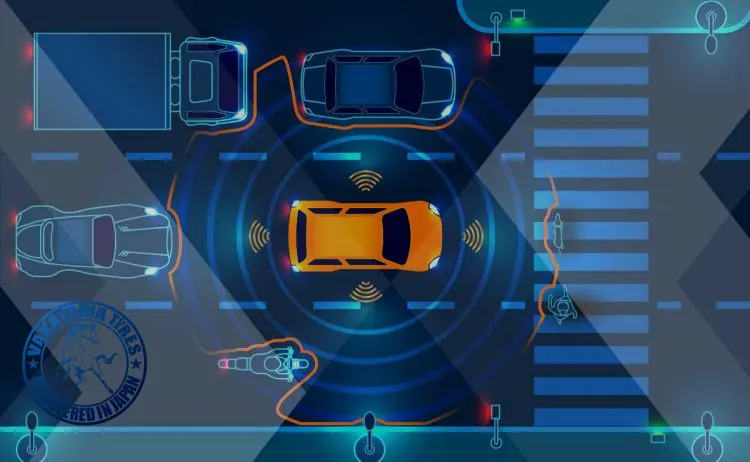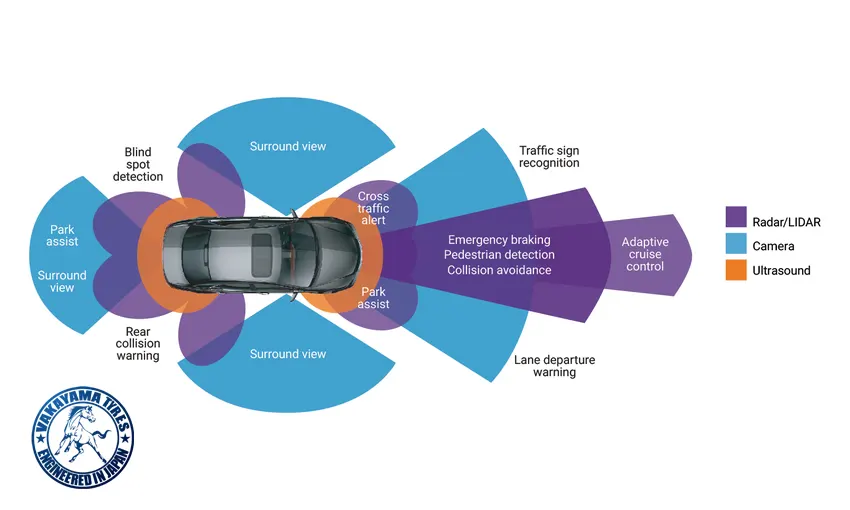Advanced Driver Assistance Systems are an example of active safety technology, acting like a bigger brother to the ESP® that now comes as standard with all new vehicles
How does ADAS work?
Automobiles are the foundation of the next generation of mobile-connected devices, with rapid advances being made in autonomous vehicles. Autonomous application solutions are partitioned into various chips, called systems on a chip (SoCs). These chips connect sensors to actuators through interfaces and high-performance electronic controller units (ECUs).
Self-driving cars use a variety of these applications and technologies to gain 360-degree vision, both near (in the vehicle’s immediate vicinity) and far. That means hardware designs are using more advanced process nodes to meet ever-higher performance targets while simultaneously reducing demands on power and footprint.

What’s the Purpose of ADAS?
ADAS (Advanced Driver Assistance Systems) are passive and active safety systems designed to remove the human error component when operating vehicles of many types. ADAS systems use advanced technologies to assist the driver during driving, and thereby improve drivers’ performance. ADAS uses a combination of sensor technologies to perceive the world around the vehicle, and then either provide information to the driver or takes action when necessary.
Active vs. Passive ADAS Systems
Passive ADAS Systems
Regardless of the number or types of sensors installed, in a PASSIVE ADAS system, the computer merely informs the driver of an unsafe condition. The driver must take action to prevent that condition from resulting in an accident. Typical warning methods include sounds and flashing lights, and sometimes even physical feedback, for example, a steering wheel that shakes to warn the driver that the lane they are moving into is occupied by another vehicle (blind spot detection).
Active ADAS Systems
In an ACTIVE ADAS system, the vehicle takes direct action. Examples of Active ADAS functions include:
- Automatic Emergency Braking: Automatically brakes as required to avoid hitting a vehicle ahead or another object, including pedestrians, animals, or anything in the lane of travel.
- Emergency Steering: steers the car to avoid striking an object in the lane of travel.
- Adaptive Cruise Control: Adjusting cruise control speed to match vehicles ahead.
- Lane Keeping Assist and Lane Centering: Steering the car to stay centered in the lane.
- Traffic Jam Assist: Combines adaptive cruise control and Lane Keeping Assist to provide semi-automated driver help during dense traffic events, i.e., stop and go conditions due to lane closures, road construction, etc.
- Self Parking: Self-maneuvering into parking spaces.
Automatic Emergency Braking (AEB)
Exactly as described, AEB systems will automatically brake in the event of an emergency. These systems will be linked to Forward Collision Detection, Object and Pedestrian Detection, and automatically apply the brakes when the driver is not acting in response to a detected threat.
The EU NCAP safety rating system attributes safety points to cars that have city-AEB and urban-AEB. City-AEB looks 6 to 8 m ahead, detects vehicles and large obstacles to avoid low speed impacts up to 20 km/h to avoid whiplash. Urban-AEB looks up to 200 m ahead and operates over the speed range of 50–80 km/h to avoid driver injuries.
Adaptive Light Control (ALC)
Adaptive Light Control (ALC) systems react to changes in the environment around the vehicle and adjust the headlight settings on the vehicle. These systems can change the strength, direction, and rotation of the headlights. Glare-Free High Beam and Pixel Light have the ability to detect the lights of approaching vehicles, and redirect the headlights of the vehicle away from the oncoming driver to avoid temporarily blinding them.

Summary
When you were a child, did you ever think your family car would be outfitted with RADAR and SONAR as airplanes and submarines had? Did you even know what LiDAR was? Did you imagine flat-screen displays dominating the dashboard and a navigation system connected to satellites in space? It would have seemed like science fiction, and utterly out of reach for 100 years at least. But today, all of that and more are a reality.

